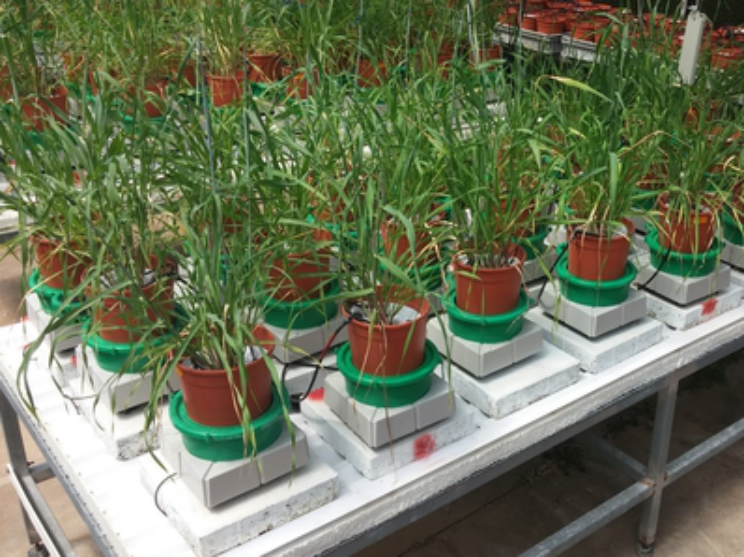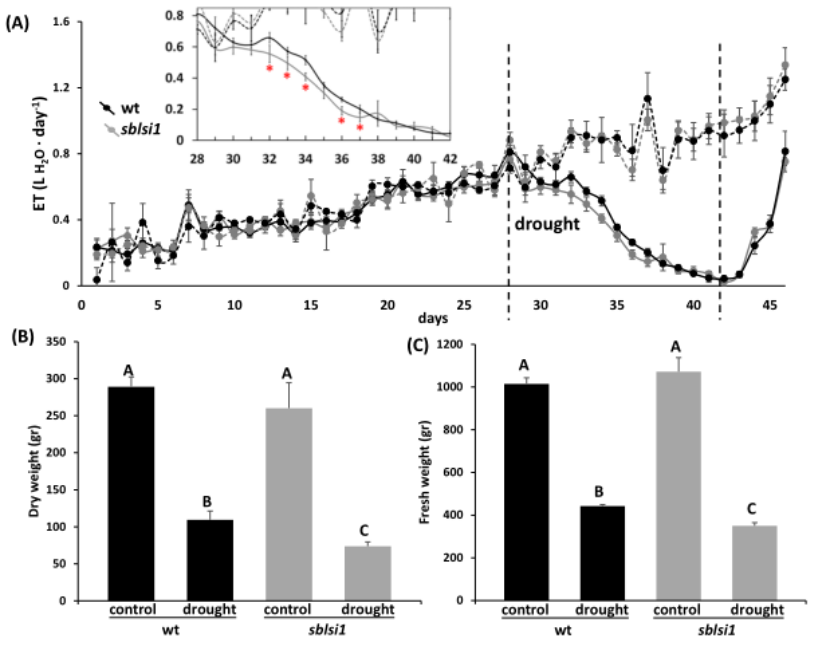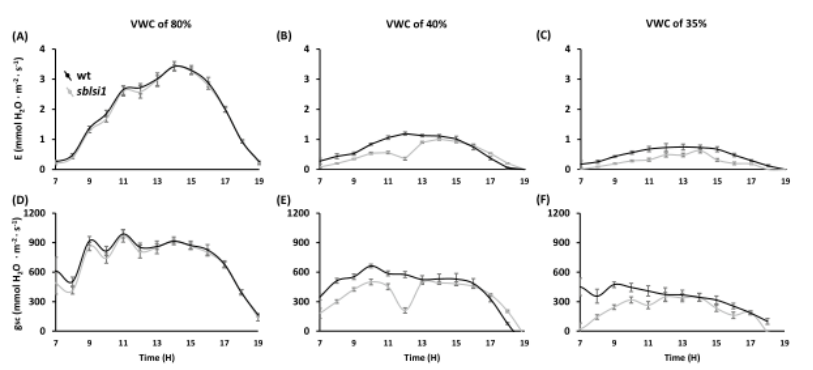品质至上,客户至上,您的满意就是我们的目标
技术文章
当前位置: 首页 > 技术文章
Plantarray植物逆境生物学研究系统:低硅与干旱结合导致高粱Lsi1突变体蒸腾作用降低
发表时间:2022-05-20 13:23:51点击:869
来源:北京博普特科技有限公司
分享:

Plantarray植物逆境生物学研究系统
摘要
背景和目标
高产稳定的植物生产力是农业研究的主要目标。施硅肥可以提高各种作物在胁迫下的产量。然而,由于缺乏解释这种效应的机制,硅的广泛应用受到限制。
实验系统
为了研究干旱条件下硅在土壤生长植物中的作用,我们利用了一种缺少关键硅根通道的高粱突变体植物——低硅1(SbLsi1)。sblsi1突变体植物只吸收野生型植物吸收的1/15的硅,使其成为研究土壤和田间条件下硅生理学的合适工具。
结果
在盆栽突变体植株中,仅在水分胁迫下,才发现瞬时和累积的全株蒸腾作用、光合速率和气孔导度显著降低。野生型和sblsi1植物的根结构、根导水率和气孔密度相似。基因型间叶片含水量相似,说明水分吸收与蒸腾作用是平衡的。
结论
良性条件下基因型之间的相似性与非胁迫植物中施硅的轻微或无影响一致,并支持突变的轻微多效性效应。干旱胁迫下突变体的气孔提前关闭导致蒸腾作用降低。这种早期反应表明,硅可以通过减少胁迫信号或反应来延缓干旱生理的发生。
Low Si combined with drought causes reduced transpiration in sorghum Lsi1 mutant


Abstract
Background and aims
High and stable plant productivity is a major aim in agricultural research. Silicon fertilization improves yields of various crop2022-05-20s under stress. Nonetheless, broad application of silicon is inhibited by the lack of a mechanism explaining this effect.
Experimental System
To study the role of silicon in soil-grown plants under drought, we utilized a sorghum (Sorghum bicolor) mutant plant lacking the key silicon root channel – Low silicon 1 (SbLsi1). The sblsi1 mutant plants absorb 1/15 of the silicon absorbed by wild type plants, making them a suitable tool to examine silicon physiology in soil and under field conditions.
Results
In mutant plants grown in pots, significant reductions in momentary and accumulated whole plant transpiration, photosynthesis rate, and stomatal conductance were found only under water stress. Root structure, root hydraulic conductance, and stomatal density were similar between wild type and sblsi1 plants. Similar leaf water contents between the genotypes suggested that the water uptake was balanced with transpiration.
Conclusions
The similarity between the genotypes under benign conditions are in accordance with minor to no effects of silicon fertilization in non-stressed plants, and support the minor pleiotropic effects of the mutation. Early stomatal closure in the mutant plants under drought stress caused the reduced transpiration. Thise early response suggests that silicon may delay the onset of drought physiology by either reduced stress signaling or reaction.